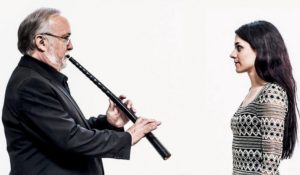 BREATHTAKING-A Cornetto and a Voice Entwined
BREATHTAKING-A Cornetto and a Voice Entwined
During the 16th and 17th centuries, the cornetto was praised as the instrument closest to the human voice. In his famous memorandum to the Seville cathedral, Francisco Guerrero states that a cornetto might be substituted for an absent soprano singer, and undoubtedly ensembles of the late Renaissance and early baroque often did mix cornetti with voices. This stunning concert, featuring an all-star ensemble and spotlighting Hana Blažíková’s angelic soprano entwined with the supernaturally beautiful sound of Bruce Dickey’s cornetto, explores the unique possibilities of this combination. The repertory includes early 17th-century motets and madrigals for voice and cornetto, as well as some rare, late 17th-century arias from operas and oratorios with obbligato parts written explicitly for the cornetto. Composers include Biagio Marini, Nicolò Corradini, Giovanni Battista Bassani, Giacomo Carissimi, Tarquinio Merula, Alessandro Scarlatti, and Maurizio Cazzati.
THE ENSEMBLE: Hana Blažíková, soprano; Bruce Dickey, cornetto; Ingrid Matthews and Tekla Cunningham, violin; Joanna Blendulf, viol; Michael Sponseller, organ & harpsichord; Stephen Stubbs, theorbo & guitar
FRIDAY, MAY 4, 8:00PM
St. Mark’s Lutheran Church
1111 O’Farrell at Gough, San Francisco
SATURDAY, MAY 5, 7:30PM
St. Mary Magdalen Church
2005 Berryman St, Berkeley
SUNDAY, MAY 6, 4:00PM*
Bing Concert Hall, Stanford University
327 Lasuen St., Palo Alto
*Single tickets for the Sunday, May 6th performance are only available by ordering directly from Stanford Live. (650-724-BING, 650-724-2464, Buy Tickets Online).
Call the box office at 510-528-1725 or email us
NOTE: the days and times for the San Francisco and Palo Alto performances of “Breathtaking” are reversed. Our San Francisco performance will be 8:00 p.m., Friday, May 4, 2018, at St. Mark’s Lutheran Church. The Palo Alto performance will be held on Sunday, May 6, at 4:00 p.m. at Bing Concert Hall on the Stanford University campus.
In the sixteenth and seventeenth centuries, the cornetto was fabled for its astonishing ability to imitate the human voice. This imitation encompassed not only its clear and bright sound, but also its agility, expressive range, dynamic flexibility, and articulation, which could make it sound almost as though the player were speaking through his instrument. Our program, which puts this imitation center stage, is called “breathtaking” both because the voice and the cornetto literally make music with the breath, and because the imitation, we hope, can figuratively take the listener’s breath away. The young Czech soprano, Hana Blažíková, described as “one of the most exciting voices in the baroque scene today” joins Bruce in celebrating this instrumental-vocal pairing.
Our program begins at the turn of the 17th century, when the cornetto was at the absolute summit of its development. Both singers and cornettists were expected to be consummate improvisers, and while singers took the lead in defining the style of ornamentation (even called gorgie for the use of the throat in articulating the quick notes), cornettists were famed for their embellishments as well. This virtuoso ornamentation soon found its way into solo music in the new style with basso continuo as well. In these pieces cornettists would have carried on a musical conversation with singers, constantly imitating and echoing their musical phrases and their embellishments so that the voice and the instrument seem “entwined”.
The third part of our program explores the final phase of this story. At the very end of the 17th century, especially in Rome and Naples, the cornetto enjoyed a late flowering, playing obbligato parts of often astounding difficulty in operas and oratorios by such composers as Alessandro Scarlatti and Giovanni Battista Bassani. It is literally the last breath of the cornetto.
In between these groups of pieces which frame the 17th century, we have asked renowned Greek composer Calliope Tsoupaki to write a new work exploring the commonality of the cornetto and the voice. This new composition sets the text Mélena imí (Nigra sum), already heard on the program in a setting by Tarquinio Merula, and is described by the composer as a serene antiphonal moment for voice and cornetto.
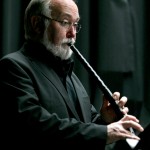 BRUCE DICKEY is one of a handful of musicians worldwide who have dedicated themselves to reviving the cornetto-once an instrument of great virtuosi, but which lamentably fell into disuse in the 19th century. The revival began in the 1950s, but it was largely Bruce Dickey, who, from the late 1970s, created a new renaissance of the instrument, allowing the agility and expressive power of the cornetto to be heard once again. His many students, over more than 30 years of teaching at the Schola Cantorum Basiliensis, have helped to consolidate and elevate the status of this once forgotten instrument. For his achievements the Historic Brass Society awarded him in 2000 the prestigious Christopher Monk Award for “his monumental work in cornetto performance, historical performance practice and musicological scholarship.” In 2007 he was honored by British conductor and musicologist Andrew Parrott with a “Taverner Award” as one of 14 musicians whose “significant contributions to musical understanding have been motivated by neither commerce nor ego.”
BRUCE DICKEY is one of a handful of musicians worldwide who have dedicated themselves to reviving the cornetto-once an instrument of great virtuosi, but which lamentably fell into disuse in the 19th century. The revival began in the 1950s, but it was largely Bruce Dickey, who, from the late 1970s, created a new renaissance of the instrument, allowing the agility and expressive power of the cornetto to be heard once again. His many students, over more than 30 years of teaching at the Schola Cantorum Basiliensis, have helped to consolidate and elevate the status of this once forgotten instrument. For his achievements the Historic Brass Society awarded him in 2000 the prestigious Christopher Monk Award for “his monumental work in cornetto performance, historical performance practice and musicological scholarship.” In 2007 he was honored by British conductor and musicologist Andrew Parrott with a “Taverner Award” as one of 14 musicians whose “significant contributions to musical understanding have been motivated by neither commerce nor ego.”
In the course of his long career as a performer and recording artist he has worked with most of the leading figures in the field of early music, including the legendary pioneers of historically informed perfomance, Gustav Leonhardt, Frans Brüggen and Nikolaus Harnoncourt. He was a member for over ten years of Jordi Savall’s Hesperion XX, and has frequently and repeatedly collaborated with Ton Koopman, Monica Huggett, Philippe Herreweghe and many others. Of special importance has been his long-time friendship and collaboration with Andrew Parrott, and in more recent years with Konrad Junghänel.
Bruce Dickey can be heard on countless recordings. His solo CD (Quel lascivissimo cornetto...) on Accent with the ensemble Tragicomedia was awarded the Diapason d’or. His second solo CD, entitled La Bella Minuta, was released on the Passacaille label in 2011, and was described as, “simply a brilliant recording”.
In addition to performing, Bruce Dickey is much in demand as a teacher, both of the cornetto and of seventeenth-century performance practice. In addition to his regular class at the Schola Cantorum he has taught at the Royal Conservatory in The Hague, the Accademia Chigiana in Siena, and the Early Music Institute at Indiana University, as well as master classes in the United States, Canada, Europe and Japan. He is also active in research on performance practice, and has published, together with Michael Collver, a catalog of the surviving cornetto repertoire, and, together with trumpeter Edward Tarr, a book on historical wind articulation. In 1997, together with his wife Candace Smith, he founded Artemisia Editions, a small publishing house that produces editions of music from 17th-century Italian convents. They now work with musical writers, literary translators, and print companies to produce music books.
In 1981, Bruce Dickey moved to Italy, partly to be closer to the origins and source materials for his instrument and its music. He currently lives with his wife and daughter in a country house, surrounded by vineyards, outside of Bologna, home of the original Concerto Palatino.
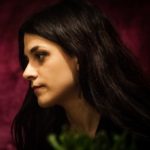 HANA BLAŽÍKOVÁ, soprano, was born in Prague. As a child she sang in the children’s choir Radost Praha and played violin. Later she turned to solo singing. In 2002 she graduated from the Prague Conservatory in the class of Ji?í Kotou? and later undertook further study with Poppy Holden, Peter Kooij, Monika Mauch and Howard Crook. Today Hana specializes in the interpretation of baroque, Rennaisance and medieval music, performing with ensembles and orchestras around the world, including Collegium Vocale Gent (Philippe Herreweghe), Bach Collegium Japan (Masaaki Suzuki), Sette Voci (Peter Kooij), Amsterdam Baroque Orchestra (Ton Koopman), L’Arpeggiata, Gli Angeli Geneve, La Fenice, Tafelmusik, Collegium 1704, Collegium Marianum, Musica Florea, among others. She has performed at many world festivals, including Prague Spring, Oude Muziek Utrecht, Resonanzen (Vienna), Tage Alter Musik (Regensburg), Festival de Sablé, Festival de La Chaise-Dieu, Festival de Saintes, Arts festival Hong Kong. In 2010 and 2013 she took part in a highly praised world tour performing the St. Matthew Passion under the direction of Philippe Herreweghe, and in 2011 she made her debut in Carnegie Hall with Masaaki Suzuki´s Bach Collegium Japan. She also sang soprano in Boston Symphony Orchestra’s performance of St. John´s Passion during the Easter season, 2011. In November of 2014 she participated in the stage production “Orfeo chaman” with L’Arpeggiata in Bogotá. Hana appears on more than 30 CDs, including the well-known series of Bach´s cantatas with Bach Collegium Japan. She also plays gothic harp and presents concerts in which she accompanies herself on that instrument. She is also a member of Tiburtina Ensemble, which specializes in the Gregorian chant and early medieval polyphony.
HANA BLAŽÍKOVÁ, soprano, was born in Prague. As a child she sang in the children’s choir Radost Praha and played violin. Later she turned to solo singing. In 2002 she graduated from the Prague Conservatory in the class of Ji?í Kotou? and later undertook further study with Poppy Holden, Peter Kooij, Monika Mauch and Howard Crook. Today Hana specializes in the interpretation of baroque, Rennaisance and medieval music, performing with ensembles and orchestras around the world, including Collegium Vocale Gent (Philippe Herreweghe), Bach Collegium Japan (Masaaki Suzuki), Sette Voci (Peter Kooij), Amsterdam Baroque Orchestra (Ton Koopman), L’Arpeggiata, Gli Angeli Geneve, La Fenice, Tafelmusik, Collegium 1704, Collegium Marianum, Musica Florea, among others. She has performed at many world festivals, including Prague Spring, Oude Muziek Utrecht, Resonanzen (Vienna), Tage Alter Musik (Regensburg), Festival de Sablé, Festival de La Chaise-Dieu, Festival de Saintes, Arts festival Hong Kong. In 2010 and 2013 she took part in a highly praised world tour performing the St. Matthew Passion under the direction of Philippe Herreweghe, and in 2011 she made her debut in Carnegie Hall with Masaaki Suzuki´s Bach Collegium Japan. She also sang soprano in Boston Symphony Orchestra’s performance of St. John´s Passion during the Easter season, 2011. In November of 2014 she participated in the stage production “Orfeo chaman” with L’Arpeggiata in Bogotá. Hana appears on more than 30 CDs, including the well-known series of Bach´s cantatas with Bach Collegium Japan. She also plays gothic harp and presents concerts in which she accompanies herself on that instrument. She is also a member of Tiburtina Ensemble, which specializes in the Gregorian chant and early medieval polyphony.
 INGRID MATTHEWS long has been established as one of the leading baroque violinists of her generation. She founded the Seattle Baroque Orchestra with Byron Schenkman in 1992, and served as Music Director until stepping down from that position in 2013.
INGRID MATTHEWS long has been established as one of the leading baroque violinists of her generation. She founded the Seattle Baroque Orchestra with Byron Schenkman in 1992, and served as Music Director until stepping down from that position in 2013.
Matthews won first prize in the 1989 Erwin Bodky International Competition for Early Music, and since that time has performed extensively around the world with numerous period-instrument ensembles. She has served as concertmaster for orchestras such as the New York Collegium, the Boston Early Music Festival Orchestra, and Musica Angelica (Los Angeles); and has appeared as a guest director and soloist with many others, including the New York Collegium, the Australian Brandenburg Orchestra, the Magnolia Baroque Festival Orchestra (Winston-Salem, NC), New Trinity Baroque (Atlanta), the Bach Sinfonia (Washington DC), Les Idees Heureuses (Montreal), the Indianapolis Baroque Orchestra, and the Victoria Symphony. For close to a decade she was first violinist of the ensemble La Luna, which specialized in 17th-century music, touring and recording to great critical acclaim.
Matthews’ career as a chamber musician has taken her to such venues as the Frick Collection (New York), the Boston Early Music Festival, the Berkeley Festival, Netwoork voor Oude Muziek (the Netherlands), the Getty Center (LA), the Pittsburgh Renaissance and Baroque Society, Early Music Vancouver, Woodstock Concerts, the Cambridge Society for Early Music, the Newberry Library (Chicago), CBC-Toronto, the San Francisco Early Music Society and the Library of Congress, among many others.
Matthews has won international critical acclaim for a discography ranging from the earliest solo violin repertoire through the Sonatas and Partitas of J.S. Bach. The latter recording was named by Third Ear’s Classical Music Listening Companion as “the finest complete set of these works,” and the critic for American Record Guide writes “this superb recording is my top recommendation for this music… on either modern or period instruments.”
Ingrid Matthews has served on the faculties of the University of Toronto, the University of Washington, Indiana University, the University of Southern California in Los Angeles, the International Baroque Institute at Longy, and Amherst Early Music; and has given master classes in baroque repertoire and style at numerous colleges and universities. She is currently on the faculty of Cornish College of the Arts in Seattle. Ingrid Matthews is a graduate of Indiana University, where she studied with Josef Gingold and Stanley Ritchie.
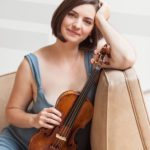 TEKLA CUNNINGHAM, baroque violin, viola and viola d’amore, enjoys a varied and active musical life. At home in Seattle, she is concertmaster of Stephen Stubbs’ Pacific MusicWorks, principal second violin with Seattle Baroque Orchestra & Soloists, and plays regularly as concertmaster and principal player with the American Bach Soloists in California. She directs the Whidbey Island Music Festival, a summer concert series presenting vibrant period-instrument performances of repertoire ranging from Monteverdi to Beethoven.
TEKLA CUNNINGHAM, baroque violin, viola and viola d’amore, enjoys a varied and active musical life. At home in Seattle, she is concertmaster of Stephen Stubbs’ Pacific MusicWorks, principal second violin with Seattle Baroque Orchestra & Soloists, and plays regularly as concertmaster and principal player with the American Bach Soloists in California. She directs the Whidbey Island Music Festival, a summer concert series presenting vibrant period-instrument performances of repertoire ranging from Monteverdi to Beethoven.
She has appeared as concertmaster/leader or soloist with the American Bach Soloists, Baroque Chamber Orchestra of Colorado, Seattle Baroque Orchestra, and Musica Angelica (Los Angeles). She has also played with Apollo’s Fire, Los Angeles Opera, Philharmonia Baroque Orchestra, and at the Carmel Bach Festival, San Luis Obispo Mozart Festival, Indianapolis Early Music Festival, Savannah Music Festival and the Bloomington Early Music Festival. She has worked with many leading directors including Rinaldo Alessandrini, Giovanni Antonini, Harry Bicket, Paul Goodwin, Martin Haselböck, Monica Huggett, Nic McGegan, Rachel Podger, Jordi Savall, Stephen Stubbs, Jeffrey Thomas, Elizabeth Wallfisch and Bruno Weil.
An avid chamber musician, Tekla enjoys exploring the string quartet repertoire of the 18th and early 19th century with the period-instrument Novello Quartet, whose abiding interest is the music of Haydn. She is also a member of La Monica, an ensemble dedicated to music of the 17th century, whose concerts have been reviewed as “sizzling”, and praised for their “irrepressible energy and pitch-perfect timing”. With Jillon Dupree, harpsichord, and Vicki Boeckman, recorders, she plays in Ensemble Electra, known for its inventive programs and energetic performances.
She can be heard on recordings with the American Bach Soloists, Apollo’s Fire, Philharmonia Baroque Orchestra, Tafelmusik, Seattle Baroque Orchestra, San Francisco Bach Choir, various movie soundtracks including Disney’s Casanova, La Monica’s release The Amorous Lyre, a recording of repertoire of Merula and his contemporaries and the Novello Quartet’s recording of Haydn’s Op. 50 string quartets. This summer she recorded Mozart’s Flute Quartets with Janet See, Laurie Wells and Tanya Tomkins.
Tekla received her musical training at Johns Hopkins University and Peabody Conservatory (where she studied History and German Literature in addition to violin), Hochschule für Musik und Darstellende Kunst, in Vienna, Austria, and at the San Francisco Conservatory of Music, where she completed a Master’s degree with Ian Swenson. She teaches Suzuki violin in both German and English and is on the early music faculty of Cornish College for the Arts.
 JOANNA BLENDULF has performed and recorded with leading early music ensembles throughout the United States and is a sought-after instructor and coach. She maintains an active performance schedule on viols and baroque cello, working with the Nota Bene Viol Consort, Wildcat Viols, Catacoustic Consort, Parthenia, Portland Baroque Orchestra and Pacific MusicWorks. Ms. Blendulf holds performance degrees with honors from the Cleveland Institute of Music and the Jacobs School of Music at Indiana University where she was awarded the prestigious Performer’s Certificate for her accomplishments in early music performance. Her summer engagements have included performances at Tage Alter Musik Regenburg, Musica Antigua en Villa de Lleyva in Colombia, the Bloomington, Boston and Berkeley Early Music Festivals, the Ojai Music Festivals as well as the Carmel and Oregon Bach Festivals. Ms. Blendulf has been on the faculties of the University of Oregon and Indiana University Historical Performance Institute as well as viol workshops across the country.
JOANNA BLENDULF has performed and recorded with leading early music ensembles throughout the United States and is a sought-after instructor and coach. She maintains an active performance schedule on viols and baroque cello, working with the Nota Bene Viol Consort, Wildcat Viols, Catacoustic Consort, Parthenia, Portland Baroque Orchestra and Pacific MusicWorks. Ms. Blendulf holds performance degrees with honors from the Cleveland Institute of Music and the Jacobs School of Music at Indiana University where she was awarded the prestigious Performer’s Certificate for her accomplishments in early music performance. Her summer engagements have included performances at Tage Alter Musik Regenburg, Musica Antigua en Villa de Lleyva in Colombia, the Bloomington, Boston and Berkeley Early Music Festivals, the Ojai Music Festivals as well as the Carmel and Oregon Bach Festivals. Ms. Blendulf has been on the faculties of the University of Oregon and Indiana University Historical Performance Institute as well as viol workshops across the country.
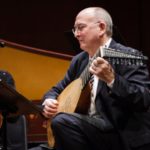 STEPHEN STUBBS, who won the GRAMMY Award as conductor for Best Opera Recording 2015, spent a 30-year career in Europe. He returned to his native Seattle in 2006 as one of the world’s most respected lutenists, conductors, and baroque opera specialists and in 2014 was awarded the Mayor’s Arts Award for ‘Raising the Bar’ in Seattle. Before his return, he was based in Bremen, Germany, where he was Professor at the Hochschule für Künste.
STEPHEN STUBBS, who won the GRAMMY Award as conductor for Best Opera Recording 2015, spent a 30-year career in Europe. He returned to his native Seattle in 2006 as one of the world’s most respected lutenists, conductors, and baroque opera specialists and in 2014 was awarded the Mayor’s Arts Award for ‘Raising the Bar’ in Seattle. Before his return, he was based in Bremen, Germany, where he was Professor at the Hochschule für Künste.
In 2007 Stephen established his new production company, Pacific MusicWorks, based in Seattle, reflecting his lifelong interest in both early music and contemporary performance. The company’s inaugural presentation was a production of South African artist William Kentridge’s acclaimed multimedia staging of Claudio Monteverdi’s opera The Return of Ulysses in a co-production with the San Francisco Museum of Modern Art. PMW’s performances of the Monteverdi Vespers were described in the press as “utterly thrilling” and “of a quality you are unlikely to encounter anywhere else in the world.” Stephen is also the Boston Early Music Festival’s permanent artistic co-director along with his long time colleague Paul O’Dette. Stephen and Paul are also the musical directors of all BEMF operas, recordings of which were nominated for three GRAMMY awards, and won the GRAMMY for Best Opera Recording 2015.
In addition to his ongoing commitments to PMW and BEMF, other recent appearances have included Handels’ Giulio Cesare and Gluck’s Orfeo in Bilbao, Mozart’s Magic Flute and Cosi fan Tutte for the Hawaii Performing Arts Festival and Handel’s Agrippina for Opera Omaha. In recent years he has conducted Handel’s Messiah with the Seattle, Edmonton, and Birmingham Symphony orchestras. Stephen will make his debut Messiah performance with Houston Symphony this December. His extensive discography as conductor and solo lutenist include well over 100 CDs, many of which have received international acclaim and awards. In 2013, Stephen was appointed Senior Artist in Residence at the University of Washington School of Music. His first major production there was Handel’s Semele in May 2014 followed by Mozart’s Magic Flute in 2015.
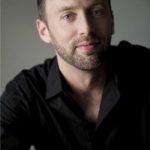 MICHAEL SPONSELLER (harpsichord) has appeared throughout Europe and North America with critical acclaim as a soloist, conductor, and chamber musician. Winner of the American Bach Soloists Competition (1998) and the Jurow International Harpsichord Competition (2002), he holds the distinction of being a two-time prizewinner at the Festival of Flanders International Harpsichord Competition (Bruges), as well as taking prizes in Montréal and Kalamazoo. His recitals, which favor the French “clavecinists” and English virginal repertoire, have been heard at the Smithsonian Institution, Saint Cecilia’s Hall, Alliance Française and at festivals such as Boston, Berkeley, and Edinburgh. Following his return to the US in 1999, Mr. Sponseller has performed and recorded frequently with the Handel and Haydn Society, Smithsonian Chamber Players, American Bach Soloists, New York Collegium, and Apollo’s Fire. Michael Sponseller performs in partnership with leading artists such as Catherine Turocy, Emyln Ngai, Derek Lee Ragin, Malia Bendi Merad, and Sarah Freiburg and performs with numerous ensembles such as La Luna, Aradia, and Rhetoric. In addition to holding degrees from the Oberlin Conservatory of Music and the Royal Conservatory of Music in The Hague, Mr. Sponseller was a teacher of harpsichord at the Baldwin Wallace Conservatory of Music.
MICHAEL SPONSELLER (harpsichord) has appeared throughout Europe and North America with critical acclaim as a soloist, conductor, and chamber musician. Winner of the American Bach Soloists Competition (1998) and the Jurow International Harpsichord Competition (2002), he holds the distinction of being a two-time prizewinner at the Festival of Flanders International Harpsichord Competition (Bruges), as well as taking prizes in Montréal and Kalamazoo. His recitals, which favor the French “clavecinists” and English virginal repertoire, have been heard at the Smithsonian Institution, Saint Cecilia’s Hall, Alliance Française and at festivals such as Boston, Berkeley, and Edinburgh. Following his return to the US in 1999, Mr. Sponseller has performed and recorded frequently with the Handel and Haydn Society, Smithsonian Chamber Players, American Bach Soloists, New York Collegium, and Apollo’s Fire. Michael Sponseller performs in partnership with leading artists such as Catherine Turocy, Emyln Ngai, Derek Lee Ragin, Malia Bendi Merad, and Sarah Freiburg and performs with numerous ensembles such as La Luna, Aradia, and Rhetoric. In addition to holding degrees from the Oberlin Conservatory of Music and the Royal Conservatory of Music in The Hague, Mr. Sponseller was a teacher of harpsichord at the Baldwin Wallace Conservatory of Music.
Mr. Sponseller’s passionate interest in 17th and 18th century opera led to making his conducting debut in 2000 with Dido and Aeneas of Henry Purcell. Since then he has performed and been assistant conductor in a wide range of repertoire, including Castor et Pollux, Ariodante, Amadigi, Alcina, Cephale et Procris, and Les Arts Florissants. In 2000, he became a research assistant at the Centre de Musique Baroque de Versailles, working with Lisa Goode Crawford on the operas of Joseph Nicolas Pancrace Royer (1705–1755). This work culminated in 2002 in the modern-day premiere of Royer’s Le Pouvoir de l’Amour with the New York Baroque Dance Company, Oberlin College, and the Centre de Musique Baroque de Versailles, which received recognition and praise from the New York Times, Wall Street Journal and Opera News. Mr. Sponseller can also be heard on several recordings from Electra, Vanguard Classics, Naxos and Centaur.

